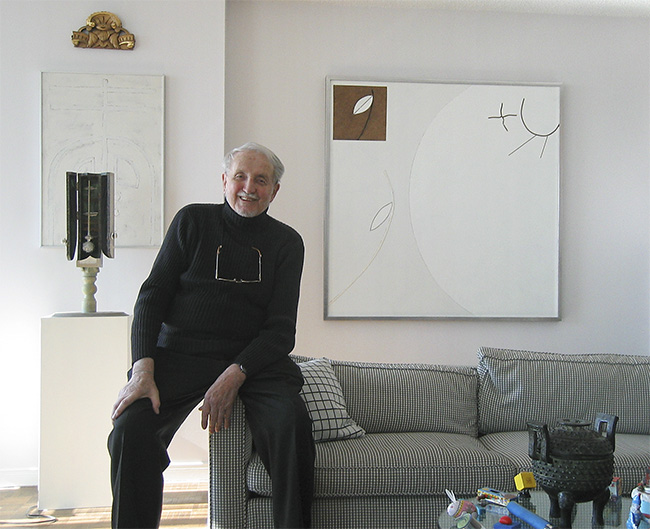↑ ↓ ↑ ↓
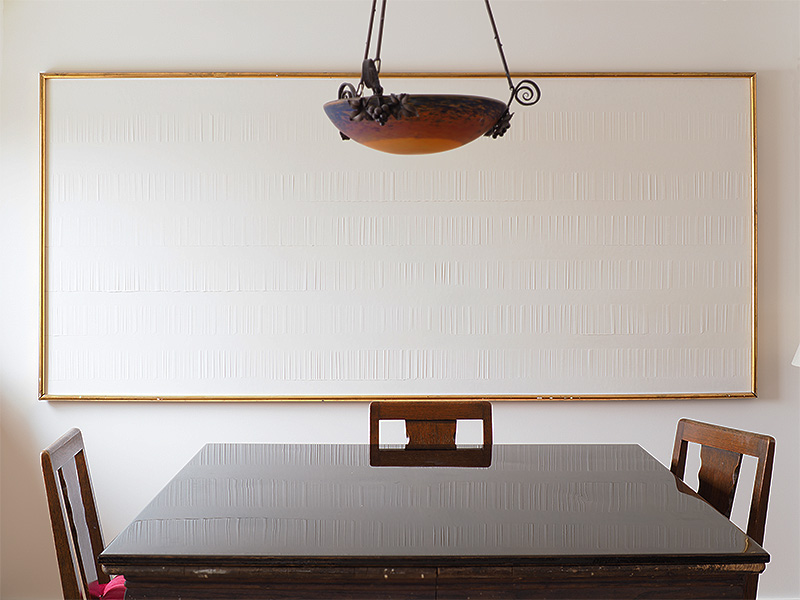 |
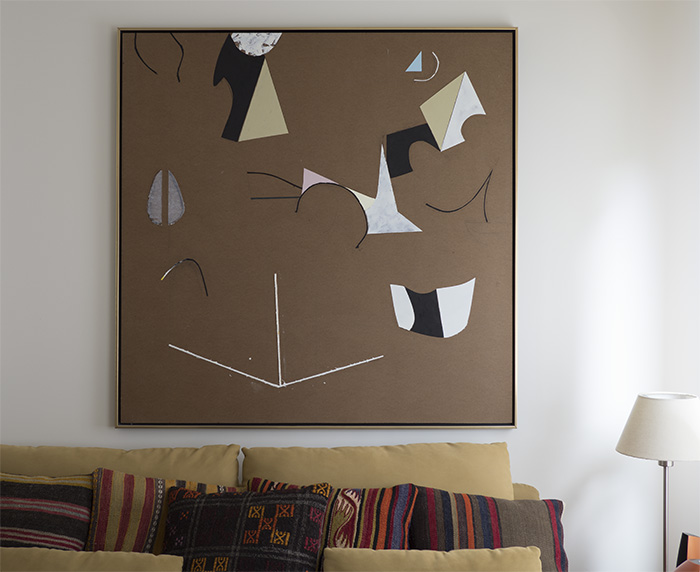 |
 |
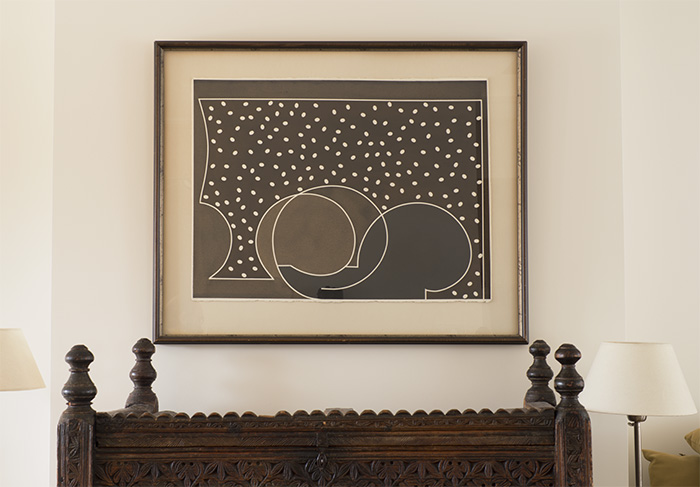 |
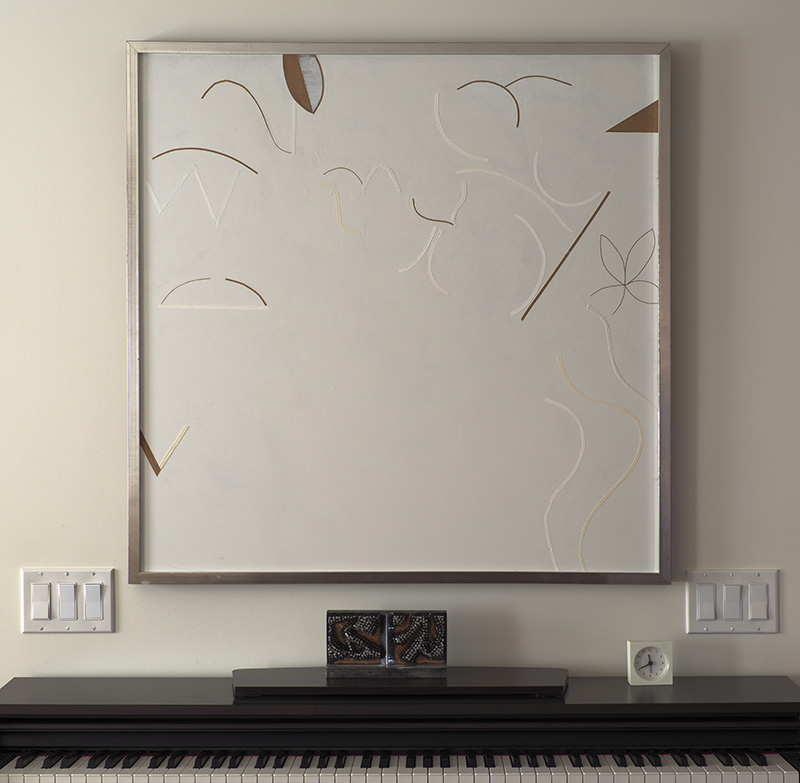 |
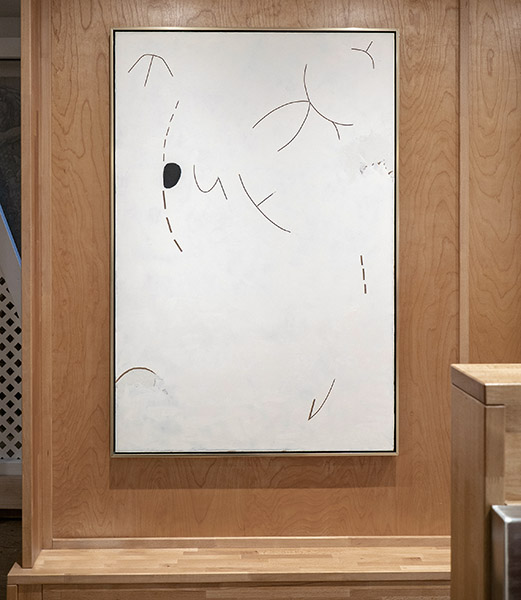 |
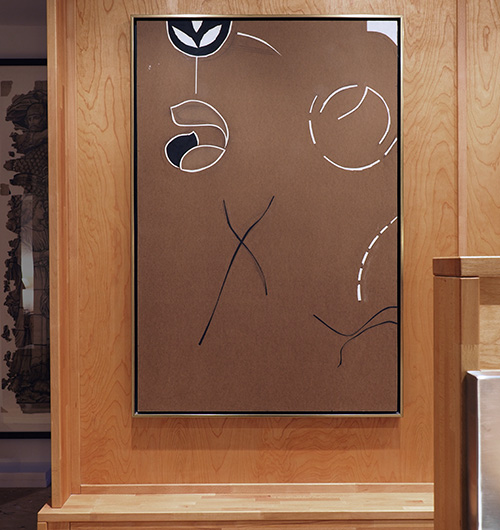 |
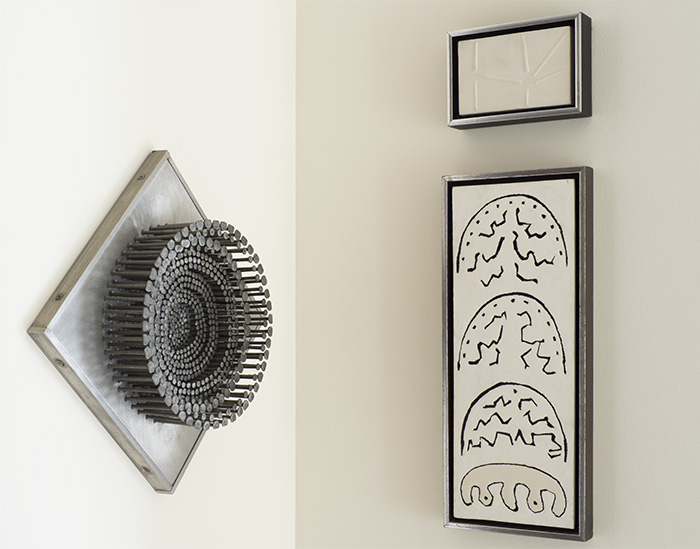 |
 |
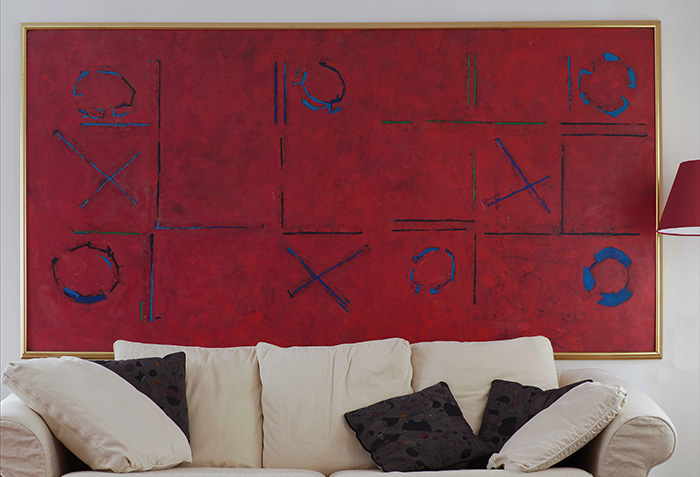 |
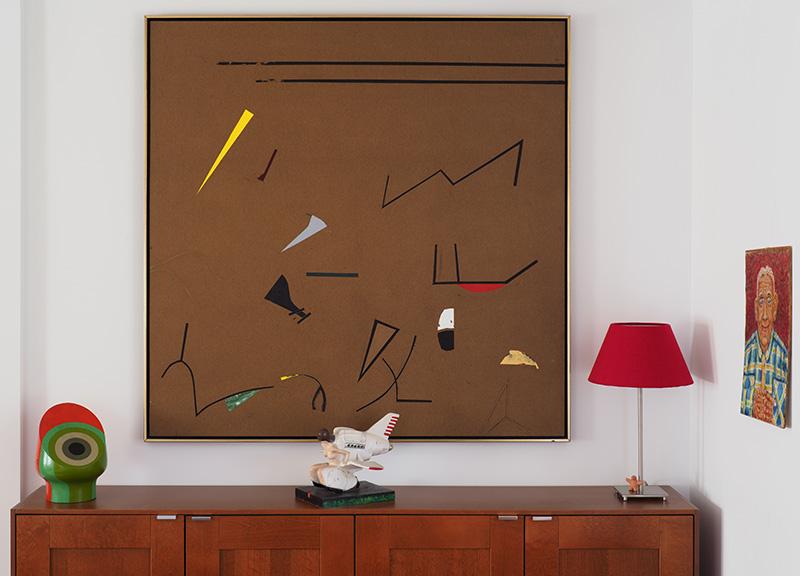 |
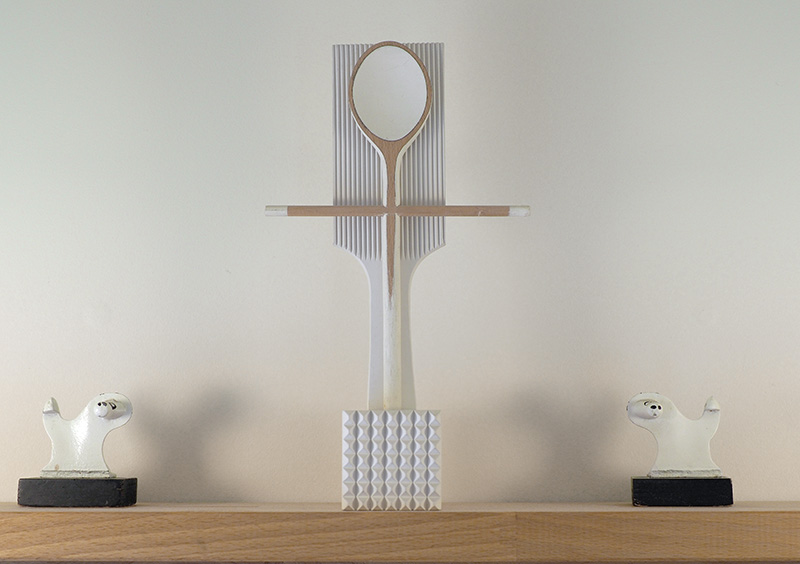 |
↑ ↓ ↑ ↓

1971
“Simplify,” he said. “Pare it back to essentials. Get rid of the extraneous.“ But there was nothing Minimalist about this. The minimal is extraneous, and the conceptual is extraneous. The essential, according to Bloore, is hand made. Not automated. Not fabricated. Not delegated. Crafted, hewn, built up and worked by hand.
By 1971, when this panel was made as one of a series of 8 or so, the painter was actually power sanding the final surfaces to get their windblown-for-centuries appearance. But it is more than an appearance. It is a texture, it is a physical sensation, a feeling of age, of time as our co-creator. Bloore's works of the early 1970’s in particular looked a thousand years old the day they went into their frames.
↑ ↓ ↑ ↓

2007
Bloore broke through from abstraction to non-representation in 1958, to white on white in 1960 and to a fully realized personal vision in 1964. From then on he always spoke of developments and drive, until 2001 when painting slowed to a trickle and a stop. He needed to break through again, this time, he said, to “an old man’s style.” And it might mean, and it did mean, breaking away from white.
Over the next few years the white ground went away and the colours came out to play, and by 2007 when this painting was done it was clear what the ink works of 1983 to 86 had really been about. They were colour and light in a world of darkness, a beautiful darkness that was not black.
↑ ↓ ↑ ↓

1976 and 1979
In the 70's white was the way, all the way. The world thought of Bloore as the white-on-white guy and this suited him fine - he even took to wearing white suits - as long as it was understood as a physical, archeological whiteness and not a puritanical, dogmatic one. Bloore's white paints interact with each another as they are materially different from each other.
The writing on the back of Byzantine Lights Series XII, above on the left, indicates that it was finished many months after being started, even though it looks like it was executed in a matter of minutes. Meanwhile the two small oil sketches on paper at the right were both produced on the same day in 1979 and they hang together very nicely as a pair. In the background is an old cartoon of a stained glass window from an English church.
↑ ↓ ↑ ↓

1984
Paper provides a ground for experimentation where the stakes are not as high as with painting, especially oil painting on panel which is severe and monumental by comparison. Bloore took an entirely improvisational approach to the composition of works on paper from 1959 right through to 1994. They range from the colourfully bombastic to the nearly invisible, from the provocative and preposterous to the sublime.
There is a curious and deceptive lightness about this example ink work from 1984. Is this a caprice? Is this a beauty less profound because it seems more resolved than that of the wide white panels?
↑ ↓ ↑ ↓

2000
Once a painting can be non-representational it can then be square. From 1959 onward most Bloores are square. They are defiantly not portraits nor landscapes, allegories or icons. In feeling they are sometimes similar to icons. This may have been the appeal of squares for Bloore as he was a great lover of Byzantine art in general and icons in particular.
A square can seem to confront us with absolute truth, and that can seem a bit much for an everyday living room wall. But in the spring of 2000 this supple and sinuous scene was caught swirling by Bloore who barely contained it, indeed he intentionally failed to contain it within the square borders of what now appeared to be a window onto some vast eternal world of whiteness.
↑ ↓ ↑ ↓

2003
In June 2003, after being creatively blocked for many many months, Bloore set himself the task of conquering an entirely new mode. This protracted aesthetic conquest saw him develop two different, entirely new modes. For the first step he went exclusively vertical. Symbolically this was a narrowing down of concerns, devaluing ideas of endurance (through time) in favour of inspiration.
↑ ↓ ↑ ↓

2004
The second step to an “old man’s style,” after going vertical, was going dark. As dark, you might say, as chocolate but much more foreboding.
The paintings of 2004 bring the sometimes-easy elegance of the two preceding series into a shockingly new dark space. This flat, deep darkness is new for the panel paintings but it is familiar territory for Bloore, featuring in many of his ink work series of the 1980's.
↑ ↓ ↑ ↓
2003 and 2004
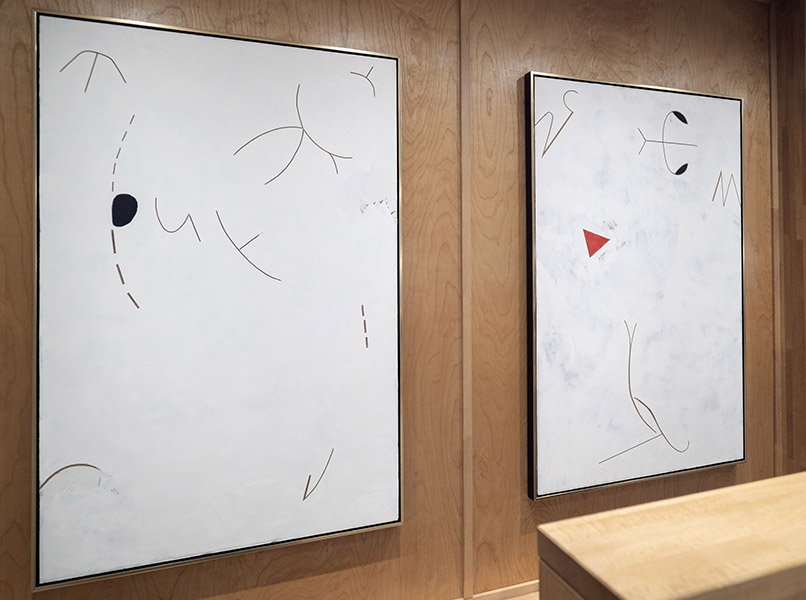 |
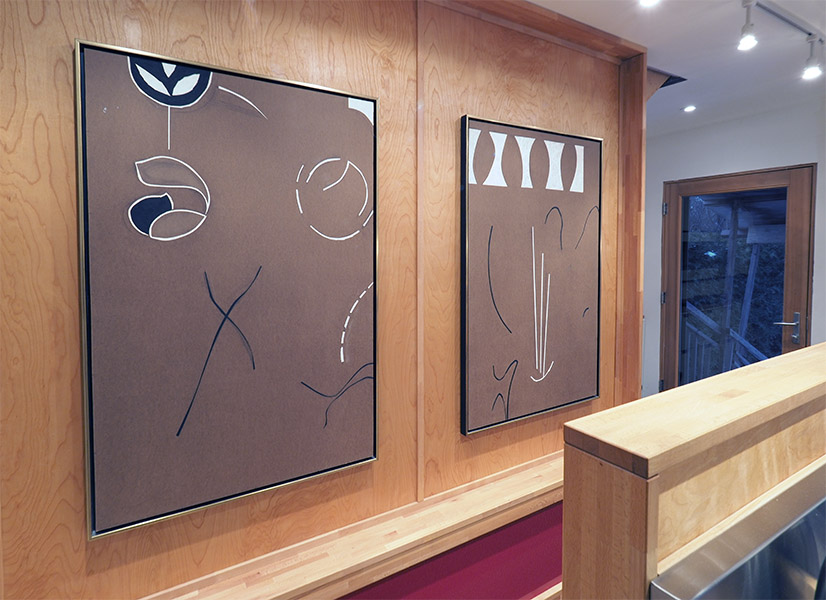 |
The photos above show the two successive series hung in succession on the same wall, two examples of each, each time. The red triangle sitting so happily in the white field of the 2003 work on the right clearly hints of the colourful works to come when Bloore, inevitably, returns to the square format in 2005.
↑ ↓ ↑ ↓

1970 and 1975
Here are two examples of the important and impactful serious business of oil on panel painting in a compact, intimate scale. The small maquettes are sometimes called Baby Bloores, a nick-name that reflects both their delicacy and their importance, their lightness and their weightiness. The top one is a particularly small exercise in paint-work from 1970, while the one below is a 1975 experiment with “Byzantine Lights” compositions executed with black under-paint.
On the adjacent wall is a “Nailie” from 1970 by David Partridge (1919-2006) the American - Canadian - English painter and sculptor. This distinctive type of wall-hung sculpture, invented by Partridge gave him the enviable ability to create art with a hammer, and marvellous art it is. There is another small Nailie on the piano a few images back.
↑ ↓ ↑ ↓

1964...
In a remote hallway, far from any windows or frequently used lights, hang works on paper and Guatamalan fabric art along with some small oil paintings. There are two drawings and an oil by Tony Urquhart (the oil is just outside this photo). Two small Bloore maquettes are in the centre and in the bottom row on either side of a Campigli print are two of Bloore's drawings from the summer of 1964. The one at the far left far left (click to see large) which was drawn at Lac La Ronge, Saskatchewan was recently removed to storage. And the other, at the near right (click to see large) which was done at Fanny Bay, British Columbia is now available for purchase at the Rumi Galleries in Toronto and Oakville.
↑ ↓ ↑ ↓

1960
A most cherished survivor of Bloore's “Great Elimination” this splendid large panel done in 1960 or ’61, stayed with the painter from studio to studio throughout his life and was never shown until the Tribute at the Royal Ontario Museum shortly after his death where it made a considerable splash. During her speech the former Governor General voiced a typical response:
“When the white paintings came out [in 1964] I was just knocked out by them. Although when I saw, tonight coming in, that red painting: I have to say I would like to walk right out with it now! I really think that red painting is something else.” - Adrienne Clarkson
↑ ↓ ↑ ↓

2007
Bloore's last nine paintings, done between January and July 2007 all have one or two black lines across the top. They make their first appearance in this work about a foot in from the left and go completely across all the others. He had actually used a white version of the same line (which turned yellow), entering from the left and interrupted in the centre, in a 4-by-6' painting, No.2 from 1999.
In front of the painting in the centre is a small work by sculptor Don Bonham, to the left a piece by Ulysse Comtois and on the wall to the right hangs a self portrait by Jan Wyers.
↑ ↓ ↑ ↓

1970
Around 1970 Bloore produced a large number of small sculptures called “Sploores” made from wooden spoons and other wooden kitchen implements. They were intentionally anthropomorphic, directly inspired by primitive art and indirectly by Joan Miro. Bloore insisted they were “deadly serious” and the only thing flippant about them was their name.
Improvising sculptures from found objects was something Bloore had occasionally done before, most famously for the notorious “Win Hedore” exhibition of 1960. In this photo the twin little dogs are fashioned from two broken pull-down window blind brackets.
↑ ↓ ↑ ↓
For More Bloores at More Homes
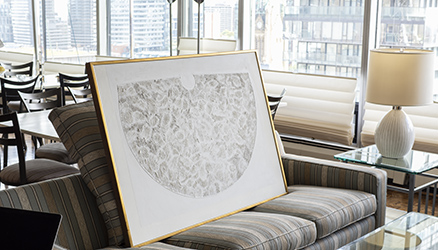
Check Out the Show Us Your Bloores Page
↑ ↓ ↑ ↓
 |
 |
 |
 |
 |
 |
 |
 |
 |
 |
 |
 |
